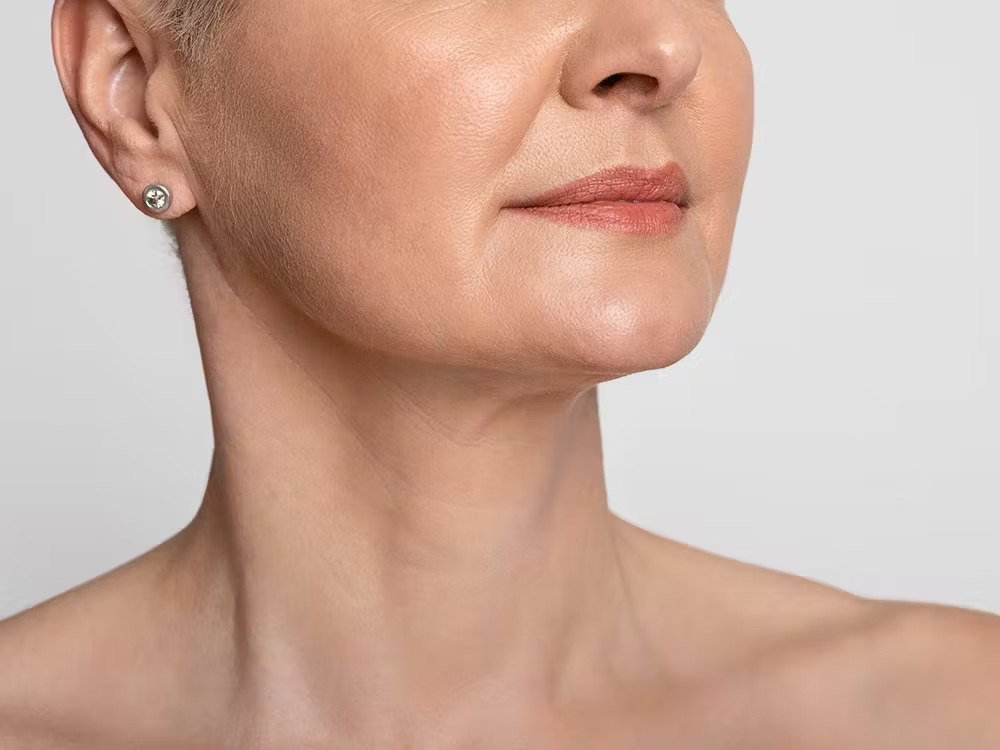Unveiling the Truth: Understanding Neck Lift and Mini Facelift Scars
In the pursuit of a youthful, rejuvenated appearance, many individuals turn to surgical procedures like neck lifts and mini facelifts. While these procedures can effectively address sagging skin and wrinkles, one concern that often arises is the potential scarring.Neck lift mini face lift scars: Understanding the nature of these scars and their management is crucial for setting realistic expectations and achieving optimal results.
The Basics of Neck Lifts and Mini Facelifts
Neck lift mini face lift scars: A neck lift, also known as a lower rhytidectomy, is a surgical procedure designed to address sagging skin, muscle laxity, and excess fat in the neck and jawline areas. It can effectively improve the contours of the neck, creating a more youthful and defined profile.
A mini facelift, on the other hand, targets the lower third of the face, focusing on the areas around the mouth, jowls, and mid-face. This less invasive procedure aims to lift and tighten the skin, reducing the appearance of sagging and wrinkles.
Understanding Surgical Scars
Scarring is an inherent part of any surgical procedure, including neck lifts and mini facelifts. During these procedures, incisions are made to access the underlying tissues and reposition or remove excess skin and fat.
The location and extent of scarring depend on the specific technique and the individual’s unique healing process. Factors such as skin type, age, and adherence to post-operative instructions can influence the appearance and severity of scars.
Neck Lift Scar Locations
Neck lift mini face lift scars: In a neck lift procedure, the incisions are typically made behind the ears and sometimes extending into the hairline or under the chin. These incisions allow access to the underlying neck muscles and tissues, enabling the surgeon to reposition and tighten them.
The scars from a neck lift are usually well-concealed within the natural creases and hairline, making them less visible when healed properly.
Mini Facelift Scar Locations
For a mini facelift, the incisions are typically made within the hairline, near the temples, and sometimes extending slightly behind the ears. These incisions allow access to the mid-face and lower facial areas, enabling the surgeon to lift and reposition the skin and underlying tissues.
The scars from a mini facelift are generally well-hidden within the hairline and natural creases, making them less noticeable when fully healed.
Factors Affecting Scar Appearance
While scarring is inevitable with these procedures, several factors can influence the appearance and severity of the scars:
1. Surgical technique: The skill and experience of the surgeon, as well as the specific techniques used, can significantly impact the appearance of scars.
2. Skin type: Individuals with darker skin tones may be more prone to developing raised or pigmented scars, known as keloid or hypertrophic scars.
3. Healing process: Proper wound care and adherence to post-operative instructions can greatly influence the healing process and minimize the risk of unfavorable scarring.
4. Age: Younger individuals generally have better healing capabilities, which can result in less noticeable scarring.
5. Genetics: Some individuals may be predisposed to developing more prominent or raised scars due to their genetic makeup.
Minimizing Scar Visibility
While scarring is unavoidable, there are several strategies that surgeons employ to minimize the visibility of scars after neck lifts and mini facelifts:
1. Strategic incision placement: Incisions are carefully planned to follow the natural contours and creases of the face and neck, making the scars less noticeable when healed.
2. Meticulous surgical technique: Skilled surgeons use precise techniques to minimize tissue trauma and promote optimal healing, reducing the risk of unfavorable scarring.
3. Scar management protocols: Post-operative care protocols, including the use of specialized dressings, silicone gels, or topical treatments, can aid in minimizing scar visibility.
4. Laser and light therapies: Once the scars have fully healed, laser or light-based treatments can be used to further improve their appearance and promote a smoother, more even skin texture.

The Healing Process and Scar Maturation
It’s essential to understand that the appearance of scars evolves over time as the healing process progresses. Initially, scars may appear red, raised, or discolored, but with proper care and time, they typically flatten, soften, and fade in color.
The complete maturation of scars can take several months to a year or more, depending on the individual’s healing process and the extent of the surgical procedure.
Managing Expectations
When considering a neck lift or mini facelift, it’s crucial to have realistic expectations regarding scarring. While skilled surgeons strive to minimize the visibility of scars, some degree of scarring is inevitable.
Discussing your concerns and expectations with your surgeon during the consultation process can help you better understand what to expect and make an informed decision about the procedure.
Embracing Your Results
While scarring may be a concern, it’s important to remember that the benefits of a neck lift or mini facelift often outweigh the potential for visible scars. These procedures can effectively rejuvenate your appearance, boosting your confidence and self-esteem.
Embrace your results and focus on the positive impact these procedures can have on your overall well-being. With proper care and time, the scars will continue to fade and become less noticeable.
Post-Operative Care and Scar Management
Adhering to your surgeon’s post-operative instructions is crucial for promoting optimal healing and minimizing the appearance of scars. This may include:
1. Keeping the incision sites clean and protected during the initial healing phase.
2. Avoiding excessive sun exposure and using broad-spectrum sunscreen to prevent hyperpigmentation.
3. Refraining from strenuous activities or movements that could disrupt the healing process.
4. Attending follow-up appointments for monitoring and any necessary scar management treatments.
Your surgeon may also recommend specific scar management products or techniques, such as silicone gels, massage techniques, or laser or light-based therapies, to further improve the appearance of scars.

Seeking Professional Guidance
If you have concerns about scarring or are dissatisfied with the appearance of your scars after a neck lift or mini facelift, it’s essential to seek professional guidance from your surgeon or a qualified dermatologist.
These experts can assess your individual situation and provide appropriate treatment options, such as scar revision procedures, steroid injections, or advanced scar management techniques, to help improve the appearance of your scars.
Embracing Your Journey to a Rejuvenated You
While scarring is an inevitable part of neck lifts and mini facelifts, it’s essential to approach the process with a positive and informed mindset. By understanding the nature of these scars, managing expectations, and adhering to proper post-operative care, you can minimize their visibility and embrace the transformative results of these procedures.
Remember, the journey to a rejuvenated appearance is a personal one, and embracing your unique beauty and confidence is the ultimate goal. With the guidance of skilled professionals and a commitment to self-care, you can navigate the process with confidence and grace, unveiling a refreshed and radiant version of yourself.





